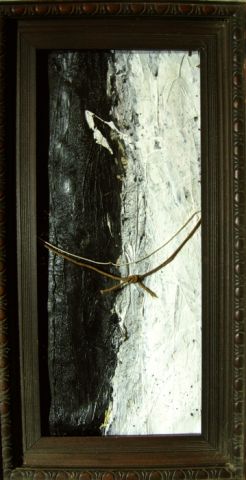David, I’ll grant we may run into trouble in our discussions because I’m American and you’re British – but vive la difference!
Re Burgin’s work, view his work as a strand of what? How is a strand different than a trend? His work has caused a shift in art production and art theory, is that not a trend? The word ‘trend’ is, I admit, a bit vulgar, but can you say it is out of step with what art has become (if I can phrase it that way, uncomfortably doing so), and I’m talking about the art that people like Burgin and any other big name artist produce. At that level of production the stakes are higher and more is involved than the search for truth – which I do believe we are all searching for, even the big guys. But for Burgin to reach the level he has and to be the influence he is has involved many other people working with him than just he alone. When you get people behind you working you in a direction it can be called a trend, or style, or mode, or direction, or theory, or movement or any other name, but it means the same thing.
As for respect, I certainly have no disrespect in mind when I use the word ‘trend’. To be a trend-setter is to be an innovator, a force, unique, visionary, determined, confident, inspired and inspiring. Art is not so lofty that it is above common vernacular, and like it or not, art is commodity so why is the word trend distasteful? Yes, Pollock was a ‘driver of change and a contributor to a movement’, as you say. He was also much more. His vision caused inspiration, other artists worldwide were inspired to take his ideas and interpret them for themselves (the Gutai group in Japan, for example). Nearly 60 years down the road from Pollock’s drip paintings, the drip in art still harkens back to him. Pollock is beyond trend-setting he is a monumental force, but his techniques (which actually were inspired by Siqueiros, the Mexican muralist) fueled the look of art production for years to follow. I feel about Pollock as he felt about Picasso – he is (was, speaking of Picasso) the major force in painting to contend with.
Re choice and judgment, tell me one choice or judgment you make which is made outside of your identity (we’re talking in the normal realm of living, not conditions of duress). We choose and judge because we want to project something about which we see ourselves to be. I choose the clothes I do because I see myself a certain way and perhaps I want to convey my personal tastes. I judge my actions to be right or wrong because I believe myself to be a certain kind of person and I want others to see me that way too. If ‘it might be true that our choices and judgments are synonymous with our identity’, as you say, then it must also be true that our choices and judgments project our identity. To live in the world is to project an identity. Projection is not necessarily something we do on purpose, which I perceive you are stating as your objection, it happens naturally.
Re thinking and thinking about, I don’t believe there is a distinction, unless it is to define the chemical and electrical activity of the brain as thinking. To think is to think about something. Why should there be a distinction?
Re markers of value, when we talk about markers of value we probably need to define the term ‘value’. If we’re talking about money, then yes, a tasteful object is a marker. If we are talking about social value then laws would be markers and are neither tasteful (perhaps) nor objects. If we are talking about the value of our lives, perhaps education is a marker of that value and is neither tasteful (again, perhaps) nor an object.
If we are talking only in the terms of objects and value, I would say quality is a marker of value, reputation, rarity and innovation perhaps are other markers of value. Often ‘tasteful’ accompanies these other qualities, but not always.
So off you go to sit in the dark, but two things, keep a window open so you can see the stars! And come back and let’s talk more. By the way, it’s nice to hear a twinkle in your voice.
